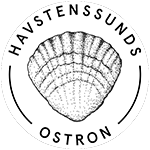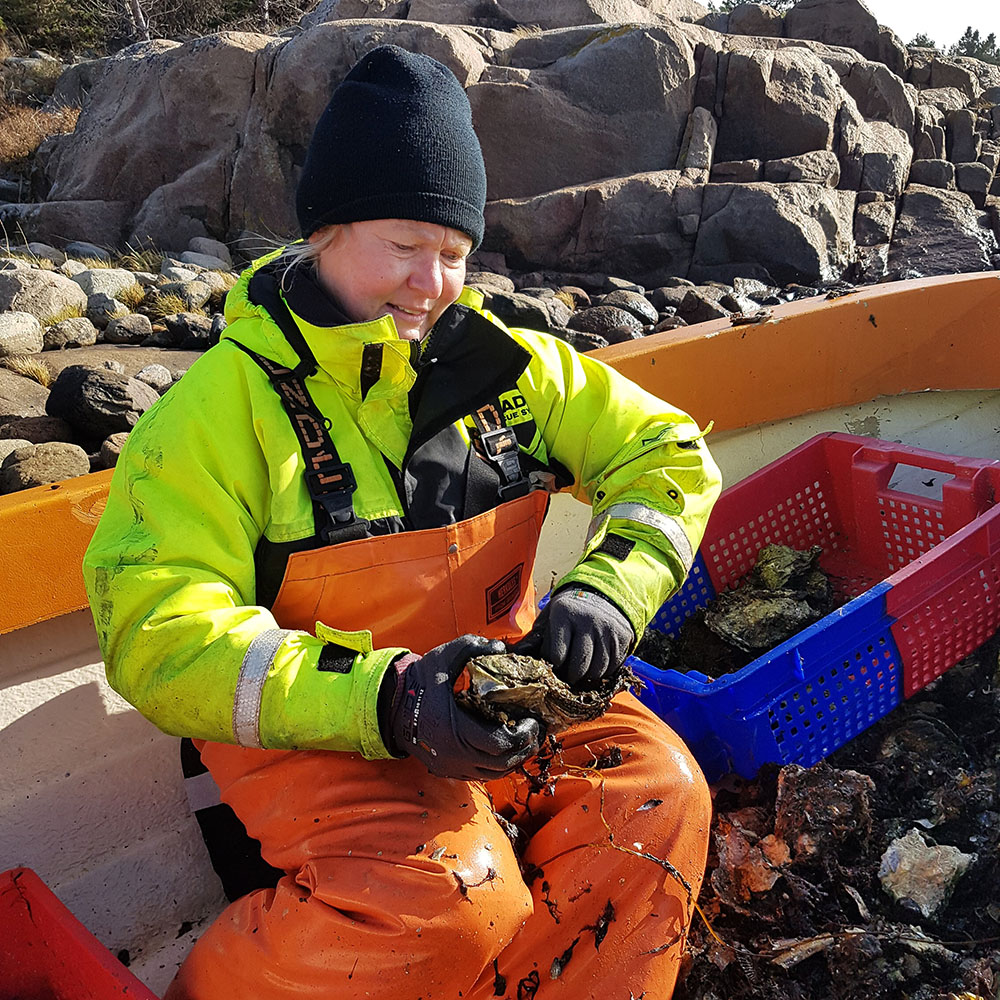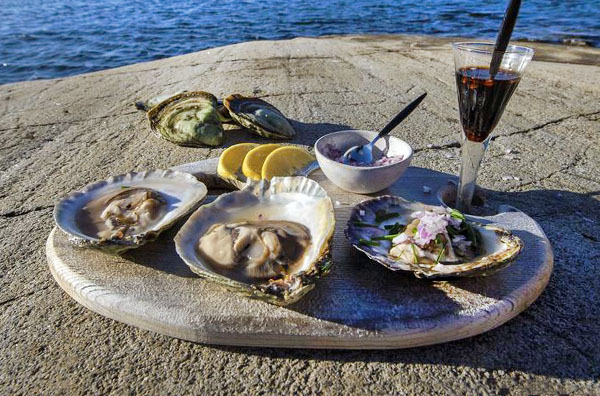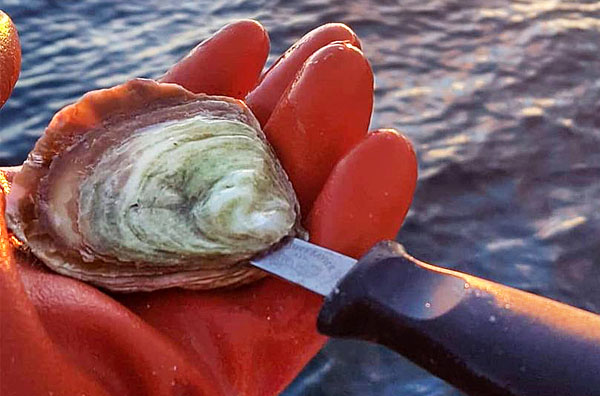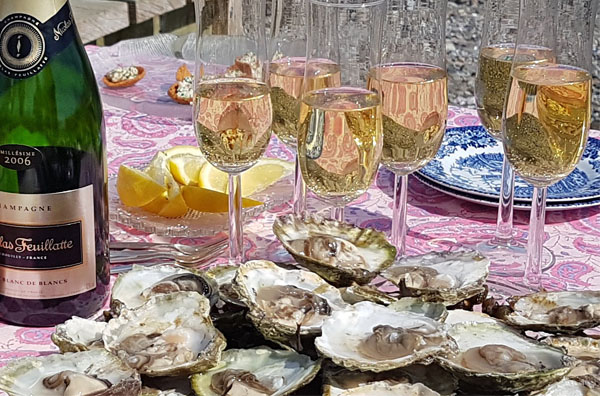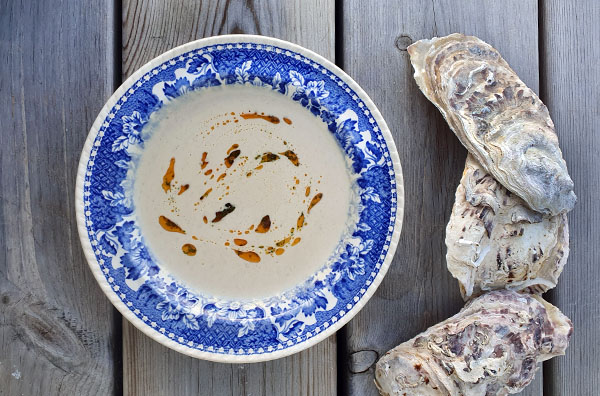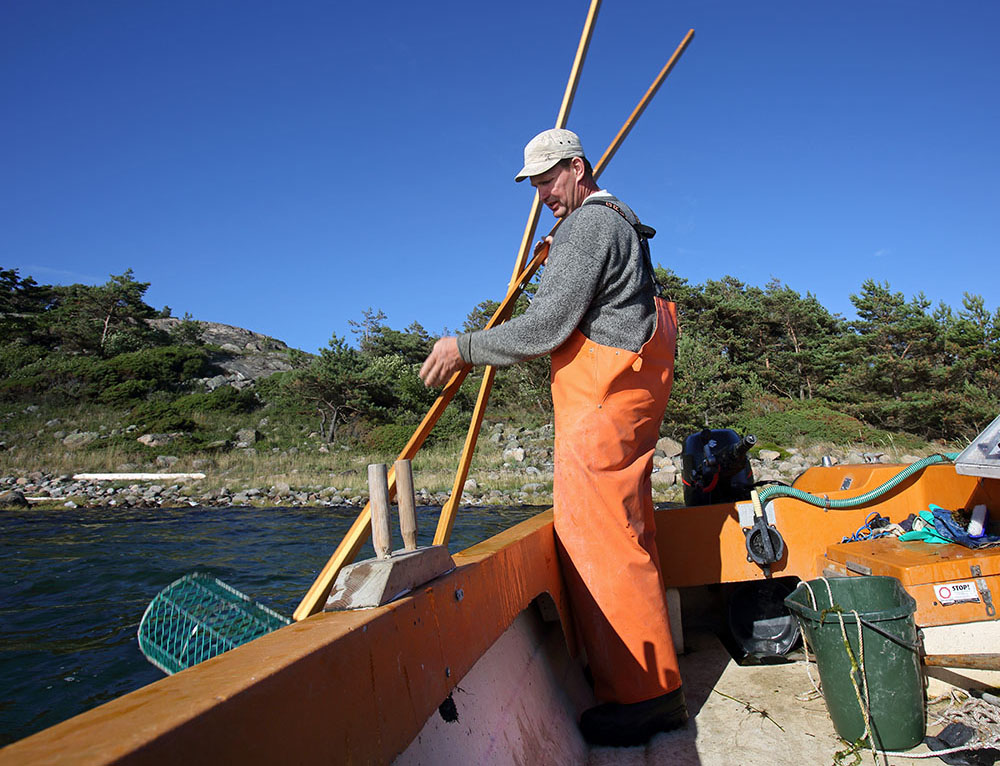
HARVEST OF WILD OYSTERS
In addition to our farmed oysters, we also harvest wild flat native (Ostrea edulis) oysters from naturally occurring oyster banks. This is the traditional way of harvesting oysters in Sweden. The oysters can be picked by hand at low tide, by freedivers, or with specially designed rakes from deeper waters. Today, oysters in deeper waters are often harvested by scuba divers. The oysters can be found all the way up to the shoreline, but the larger oyster banks are at a depth of 2-15 meters deep. The right to harvest wild oysters belong to the landowner, from the shoreline to 200 meters out to sea. Permission from the landowner must be granted before harvesting wild oysters, and a commercial fishing license is required to sell the oysters. Regular culling of oyster banks is necessary for the oysters to thrive. When harvesting wild flat oysters, you have to think a bit like a farmer looking after his crops, by weeding in the right way, at the right time, while being careful to not harvest too much.
WILD PACIFIC OYSTERS
(Crassostrea gigas)
For a few years we have been harvesting the wild stock of the invasive Pacific oysters also known as the Japanese giant oyster. This is a species that established itself in Sweden and Norway in 2006. We consider this to be important part of our work, partly because we want to protect our native oyster species and at the same time use a resource that is here instead of importing it from other countries. In Sweden, Pacific oysters are not allowed to be farmed, as they are considered invasive. But outside of Scandinavia Pacific oysters are the most commonly farmed oyster. During the last 10-15 years, Pacific oysters have spread more and more along the Swedish west coast and are multiplying uncontrollably, through fertilization in the open ocean. They take over both beaches and natural oyster banks for our native flat oysters. The oysters that lie in shallow water freeze to death during winter and gradually sharp and coral-like reefs consisting of mounds of Pacific oyster shells are appearing along the coast. They also grow on piers, rocks and boats. With this in mind it is important to cull the population of Pacific oysters. At the same time this is a sustainable food resource that is now available here. The Pacific oyster presents both challenges and opportunities for the Swedish west coast. From a biological perspective, Pacific oysters can contribute to improved water quality and increased biodiversity, but the stock must be culled to be kept under control.
